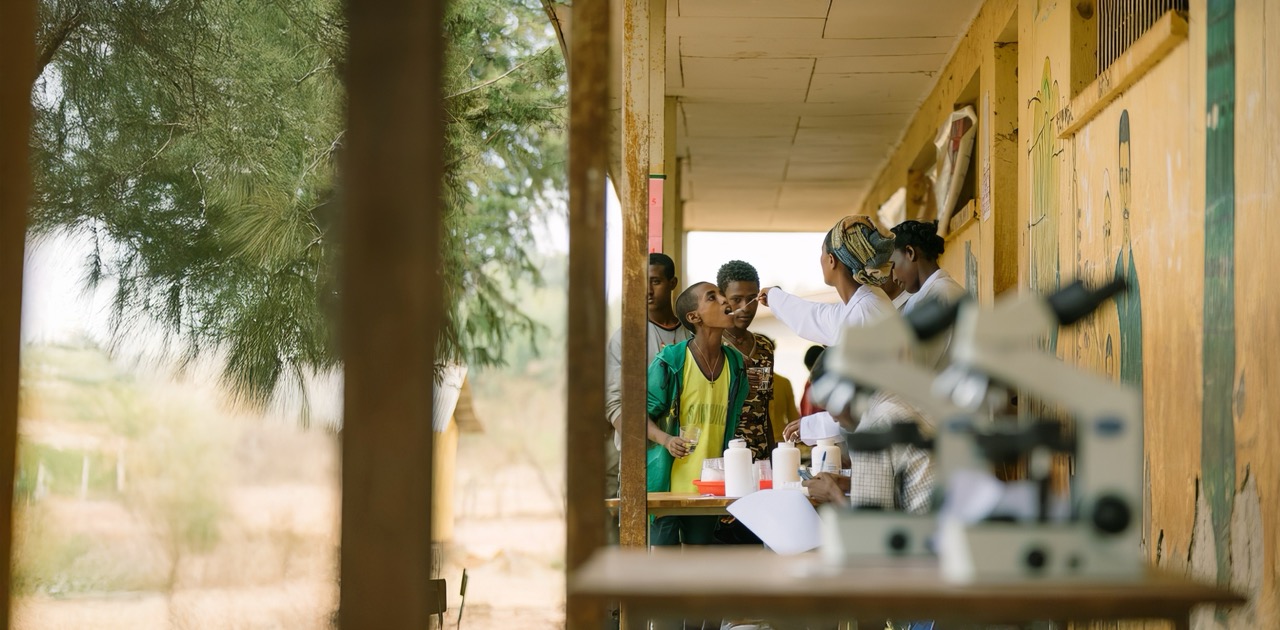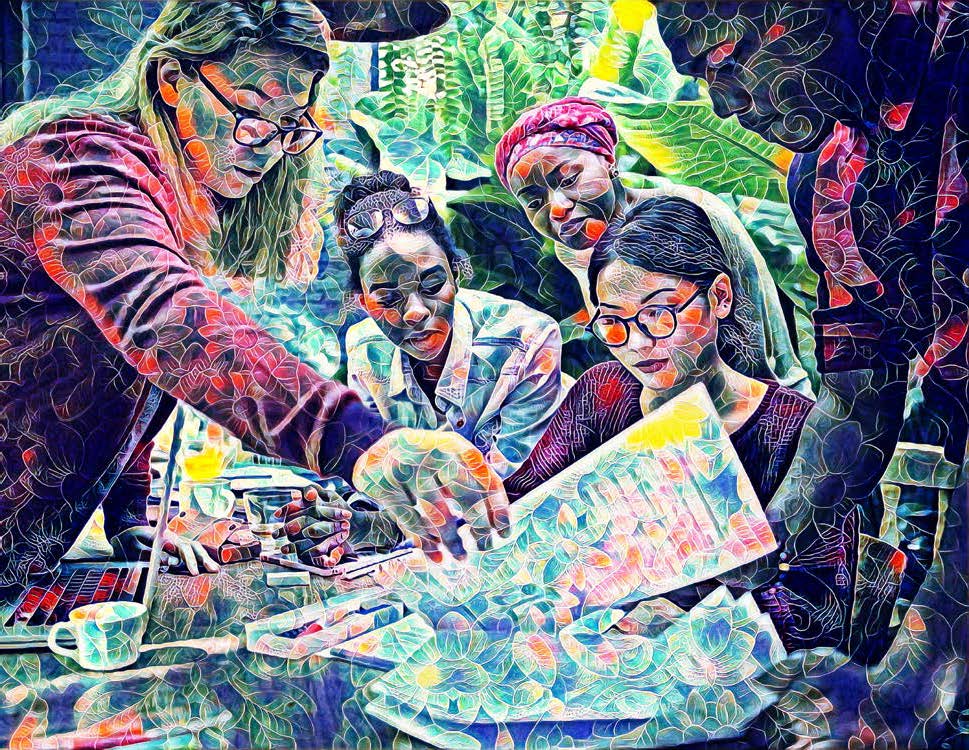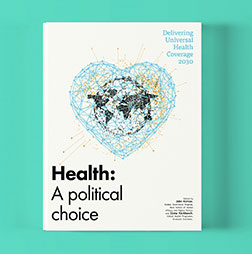The unfinished agenda: Why NTD elimination remains a political choice
Politics, health equity and the elimination of neglected tropical diseases (NTDs) are closely connected, highlighting how power dynamics, prioritisation and structural inequality influence both the burden of disease and the response to it. Health is always political, because decisions about whose needs are prioritised, how resources are allocated, and which communities are heard or ignored inevitably shape health outcomes. Nowhere is this clearer than in the global fight against neglected tropical diseases.
NTD elimination is also one of the most cost-effective public health investments in history – at just $0.50 per person, it delivers not only health benefits but also measurable economic, educational, and social gains. For governments, this means stronger human capital and national prosperity; for donors, some of the highest returns on investment in global health. Affecting the poorest and most marginalised populations – who in many countries also represent the majority of citizens and therefore a significant voting bloc – NTDs sit at the intersection of poverty, inequality, and fragile health systems. Their elimination is not simply a public health challenge – it is a political choice that reflects priorities, values, and commitments to equity.
The Unfinished Agenda of NTDs
1.5 billion people remain at risk of NTDs such as lymphatic filariasis, river blindness, trachoma, and schistosomiasis each year. Far from being rare conditions, these diseases of poverty flourish where health systems are weakest and safe water and sanitation are out of reach.
The communities most affected are often those with the least political influence: rural farmers, women and girls burdened by caregiving, and displaced populations living in fragile settings. The persistence of NTDs is therefore not only a health failure – it is an indictment of global inequity.
This unfinished agenda is also a missed opportunity for governments to reduce poverty, increase school attendance, and strengthen workforce productivity – and for donors to achieve maximum impact with modest resources. In our work, we have seen how NTDs erode both human potential and community resilience. The disability and stigma associated with these diseases reinforce cycles of poverty, preventing children from attending school and adults from earning livelihoods. Addressing NTDs is not an optional extra; it is fundamental to building fairer and more sustainable societies.
Choosing Equity: How Political Decisions Shape Health and NTD Elimination
NTD elimination is inseparable from the pursuit of health equity. By definition, equity demands that we prioritise those furthest from access – those with the least ability to demand or pay for services. Yet it is precisely these populations that are most vulnerable when resources tighten.
For just $0.50 per person, countries can deliver treatments that break cycles of poverty, improve school attendance, and expand workforce participation. Few other health investments yield such outsized returns. But as international aid plateaus and donor priorities shift, NTDs risk being deprioritised in favour of higher-profile health issues.
The choice to sustain or cut NTD funding is therefore not a technical decision – it is a political one. It reflects how governments and donors value the lives and dignity of those at the margins. In choosing to continue investing in NTDs, leaders make a powerful statement: that no life is too peripheral, too poor, or too voiceless to matter.
Beyond Aid: Domestic Ownership and Integration
International funding has been vital in driving down the burden of NTDs. Global partnerships and mass drug administration campaigns have achieved extraordinary results, preventing millions of cases of disability and averting untold suffering. Yet the future of NTD elimination cannot depend on
aid alone.
With international resources dwindling, the spotlight now falls not only on national governments but also on a broader set of domestic actors. Domestic political leadership remains decisive, yet African philanthropists, businesses, and communities – including an expanding middle class increasingly willing to pay for services like deworming for their children – are also shaping the future of NTD elimination. For governments, sustaining NTD programs is not just about health – it is about building national competitiveness and ensuring that no community is left behind. For donors, continued support is a chance to amplify domestic progress and safeguard decades of investment.
Where countries have integrated NTD services into primary health care, mobilised diverse streams of domestic financing, and built accountability into health planning, progress has proven both resilient and sustainable.
This transition is not merely about financial independence; it is about embedding equity within national systems. Community drug distributors and health workers trained in NTD programmes often deliver far more than medicines: they extend the reach of health systems, provide trusted advice, and connect families to essential services like maternal health, immunisation, and water and sanitation. Prioritising NTD elimination strengthens the very foundations of universal health coverage.
Tanzania: Choosing Equity Through Domestic Resource Mobilization
Tanzania illustrates how political will can translate into concrete choices for sustaining NTD progress even when external support falters. When USAID froze funding in 2025, the Ministry of Health immediately mobilised domestic financing through the Comprehensive Council Health Plans and Medium-Term Expenditure Framework . For the 2025/2026 fiscal year, all 184 districts allocated funds for NTD interventions – a landmark demonstration of leadership. At the same time, the government integrated mass drug administration into other health campaigns such as immunisation and Vitamin A supplementation, and leveraged local community health workers to deliver treatment at lower cost.
These decisions were not inevitable. They were political choices that prioritised equity. By reallocating limited local resources, district medical officers and council planners signaled that even in an era of donor retrenchment, the poorest and most marginalised communities would not be abandoned. This act of domestic solidarity has allowed Tanzania to maintain momentum toward elimination – keeping trachoma down from 69 endemic councils in 2012 to just 7 in 2024, and lymphatic filariasis from 119 councils in 2015 to only 5 by 2024.
Tanzania’s experience demonstrates that resource mobilisation is not simply a technical fix. It is an expression of political resolve: to sustain equity-driven health commitments, to embed NTD services within national systems, and to protect the gains of decades of investment.
A Test of Global Solidarity
The fight against NTDs is a microcosm of the broader test facing global health today: whether we are willing to act in solidarity with those most excluded.
The Sustainable Development Goals enshrine a promise to “leave no one behind”. But, achieving this vision depends on confronting precisely those conditions – like NTDs – that entrench inequities. Rising nationalism, shifting donor landscapes, and competing emergencies risk sidelining the diseases of poverty. Allowing this to happen would not only undermine decades of progress; it would betray the spirit of equity at the heart of the SDGs.
International partners still have a critical role to play. Continued funding, innovative financing mechanisms and political visibility remain essential to sustain momentum. But donors must also recognise that NTD elimination is not peripheral – it is one of the most effective ways to deliver equity, justice, and measurable returns on global health investments.
Choosing Equity, Choosing NTD Elimination
Eliminating NTDs is achievable within our lifetime. The medicines are available, the strategies are proven and the benefits – for individuals, economies, and societies – are undeniable. What remains uncertain is not the science, but the politics.
For governments, investing in NTD elimination means protecting citizens’ dignity, strengthening economies, and securing political legitimacy by serving the majority. For donors, it represents one of the best-value investments in global health, with extraordinary returns for a modest cost.
Governments and partners must make deliberate choices: to protect funding for the poorest, to integrate NTD services into national systems, and to frame their elimination as a cornerstone of health equity. This means developing universal health coverage programmes that explicitly include NTDs, investing in community-led approaches that amplify the voices of those most affected, and ensuring data are disaggregated by geography, gender, age, and income so that resources can be targeted where inequities are greatest.
These are not technical adjustments – they are political choices. By acting intentionally to improve the health of the so-called “bottom billion”, countries affirm that equity is central to health policy. The choice is stark: either accept persistent inequities, or act decisively to end diseases of poverty. In choosing NTD elimination, leaders choose fairness, resilience and a healthier, more equitable future – for their citizens, and for the world.












